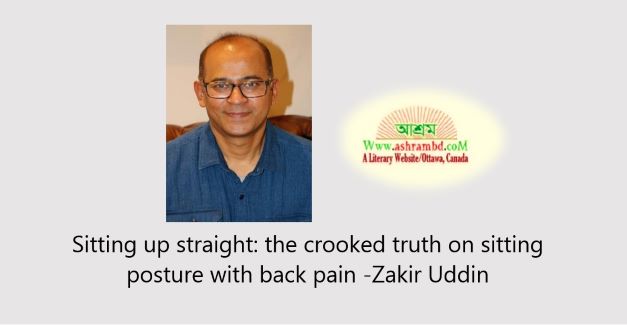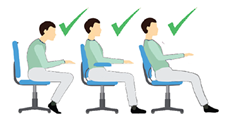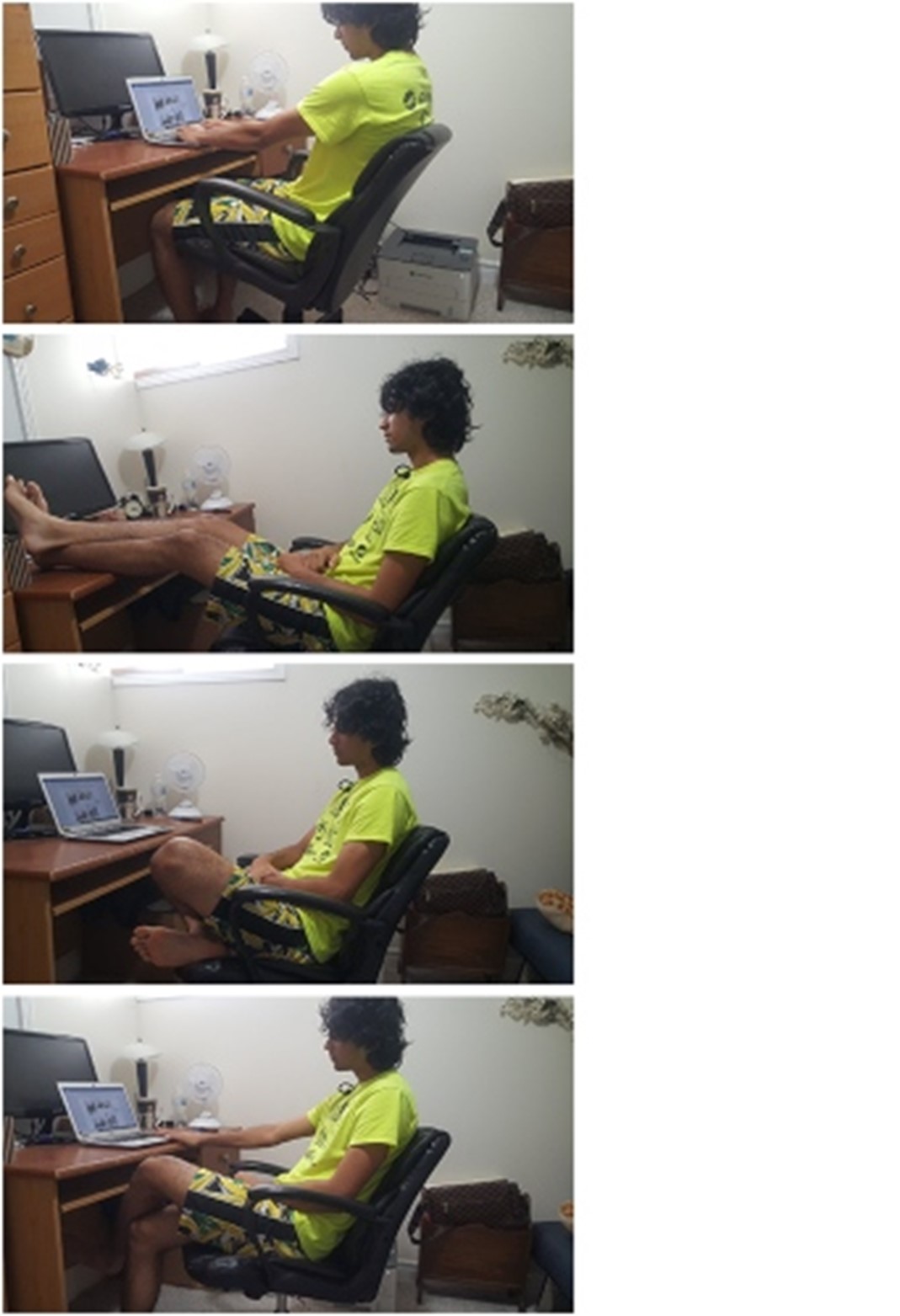Sitting up straight: the crooked truth on sitting posture with back pain

Zakir Uddin, PhD (McMaster), PDF (McGill)
Introduction
Back pain is one of the leading causes of disability worldwide and one of the major global public health problems. “Sit up straight,” is the most repeated counsel on how to maintain a healthy back. It’s the conventional wisdom that you will not get back pain if only you sit with a straight back. The problem is, this is not supported by scientific studies. While business media and websites swear that bad posture (e.g. slouching) causes back pain and health disorders, there is no evidence that it causes health problems. In fact, stiffening the back only arrived in the 19th century due to the development of a more desk-based work environment. Before then, aristocratic fashion favored slouching posture. Perhaps counter-intuitively, there is insubstantial evidence linking posture and backache. Even between trained physiotherapists, there is a disagreement on what is the best posture, and that’s another bit of evidence that shows that there really isn’t a perfect posture. Rather than focusing on the right posture, the ability to vary it and shift easily may be more important in view of scientific evidence. This article is focused on the concept of the ideal (commonly advised) versus correct posture (reality) for the best scientific recommendation.
Ideal versus Correct Posture
The image (Figure 1) depicts 3 different but common sitting postures. Let’s elaborate on the concept of "ideal" versus "correct" sitting posture and comment on the first and third "correct" postures depicted. The second (middle) picture here is an "ideal sitting posture" (elbow, hip, and knee at 90 degrees), whereas the first and third are not, as described in most ergonomic guides. This “ideal” sitting posture is advised and other 2 correct postures are discouraged commonly by health professionals, although all 3 postures are "correct."

FIGURE 1. Reproduced with permission from Slater et al.1
Unfortunately, many ergonomic chair marketing policies are trying to impose the image of ideal sitting posture to the public by adding spine curvature and depicting their chair design as an ideal tool to maintain the natural shape of the spine without giving any idea to the public about fundamental static versus dynamic physiological nature of human back/spine.

FIGURE 2. Examples of a short-term sitting option toward the concept of "good posture" (dynamic posture). See McGill3 for more details.
Let us further expand on the concept of a "correct" sitting posture. The correct sitting posture for prolonged sitting is a variable posture that shifts internal loads among the various tissues. Figure 2 illustrates correct sitting posture and the functional consequences of dynamic motion over time.3 These are short-term sitting options to reduce the tissue load, to be used in addition to the well-known "ideal sitting posture" (elbow, hip, and knee at 90 degrees). Interchanging postures (alternating dynamic and static) between short-term options and the ideal one is beneficial and gives us the concept of "correct posture."
Figure 2. Examples of a short-term sitting option toward the concept of "good posture" (dynamic posture). See McGill for more details. To put it another way, Professor McGill, renowned spine bio-mechanist, makes 2 key points2: (a) sit in intervals, and (b) change positions/switch chairs. These strategies are better for pain prevention and rehabilitation. To illustrate the fact, as a professor who often sits in the workplace, McGill would move between 3 different sitting arrangements throughout the working hours of his day (e.g., sitting on a regular desk chair, a kneeling chair, and a gym ball). All postures have some benefits and disadvantages, but switching postures can help to reduce the pain and stress provoked by any single or static posture.
Conclusion
Shifting internal loads among the various tissues (alternating dynamic and static posture) is the fundamental concept of "correct posture." Simply, it means you need to change your sitting posture as frequently as possible for your better back/spine health.
References
1.Slater D, Korakakis V, O'Sullivan P, Nolan D, O'Sullivan K. "Sit up straight": time to re-evaluate. J Orthop Sports Phys Ther. 2019;49:562-564. https://doi.org/10.2519/jospt.2019.0610
2.McGill S. Back Mechanic: The Step by Step McGill Method to Fix Back Pain. Waterloo, Canada: Backfitpro Inc; 2015.
3.McGill S. Low Back Disorders: Evidence-Based Prevention and Rehabilitation. 3rd ed. Champaign, IL: Human Kinetics; 2016.
Zakir Uddin, PhD (McMaster), PDF (McGill)
Ottawa, Canada
Email: uddinz2@mcmaster.ca
-
en-ashram-N/G
-
08-12-2023
-
-